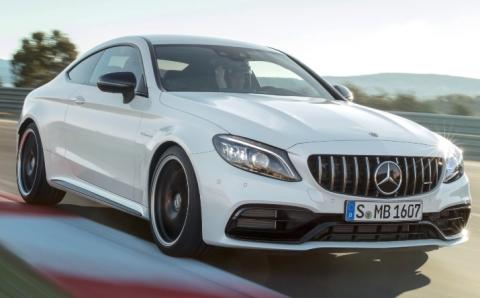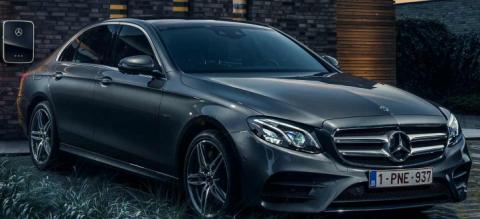http://www.Motorward.com - Subscribe For More Cool Videos: https://goo.gl/2nkv2Z
Concept Sprinter F-CELL showcases expansion of eDrive@VANs strategy
More than ever before, Mercedes-Benz Vans is making the selection of the right powertrain concept dependent upon customer benefits. Besides vehicle technology, this also takes into consideration system weight, charging or refuelling time, range and commercial economy. Looking to the future, Mercedes-Benz will enhance the eDrive@VANs strategy with the fuel cell. The Concept Sprinter F-CELL uses the example of a semi-integrated motorhome to show the full breadth of the characteristic benefits of a fuel cell, from long range to zero-local-emissions mobility. These are characteristics that are also ideally suited to other use cases such as longer courier routes or minibuses in inter-urban operation.
The Concept Sprinter F-CELL combines fuel cell and battery technology in a plug-in hybrid. The intelligent interaction of battery and fuel cell delivers an electric output of around 147 kW and 350 newton metres of torque. The three tanks in the substructure store a total of 4.5 kilograms of hydrogen
and facilitate a range of around 300 kilometres. If a longer range is required, another tank at the rear of the vehicle can be added, lifting the range to as much as 530 kilometres.
Efficient, economical, flexible and reliable at all times: in
everyday fleet operation, battery electric vehicles are measured against
the same parameters as vehicles with conventional drives. With the eVito,
which comes to market right after the 2018 IAA Commercial Vehicles, Mercedes-Benz Vans is proving that electrified models are competitive and, depending on use case, able to hold their own in terms of cost against classic internal combustion engines. That is why the brand with the three-pointed star has been taking a new approach since the introduction of the eDrive@VANs strategy – the use case is now the key factor when it comes to evaluating various powertrain options. Battery-electric drive or classic internal combustion engines are then only selected when they offer the optimum prerequisites for a defined application. The powertrain line-up will be enhanced in the medium term by the fuel cell. Showcasing the merits of this technology is the Concept Sprinter F-CELL.
To meet the needs of as many transport requirements as possible and enable entry into zero-local-emissions electric mobility for a diverse array of sectors, the eSprinter is already waiting in the wings as the second model after the eVito. The large van will celebrate its market premiere next year.
Check practicality with the eVAN Ready app
The level of interest in this new form of mobility already apparent ahead of market launch shows that the new eVito model range meets customer expectations. One strong indicator of positive customer feedback is the extensive use of the eVAN Ready app, which enables users to check online whether battery-electric models could play a role in their own fleet.
“A zero-local-emissions fleet that still meets all expectations in terms of everyday usability, flexibility, reliability and economy – the eVito dispels these apparent contradictions. We are at the forefront of this development, will use the momentum, follow up with the eSprinter and, in the medium term, offer battery-electric drive across the entire van line-up. We want the selection of a specific powertrain variant to be determined by the respective use case and not by the availability of the suitable vehicle class”, says Volker Mornhinweg, Head of Mercedes-Benz Vans.
A range of 150 kilometres, fully recharged in six hours
The new eVito is at home primarily in urban delivery traffic. However, its range and load capacity also meet the demands of tradespeople and service technicians. An installed battery capacity of 41 kWh delivers a range of around 150 kilometres. Even when conditions are unfavourable, the customer still has a range of 100 kilometres. The full range is restored after six hours of charging.
The battery-electric drive generates 84 kW and up to 300 newton metres of torque – tailormade for urban use. The top speed can be adapted to the given use case. If the eVito is driven largely in city-centre environments, a top speed of 80 km/h conserves energy and increases the range. Alternatively, it can be configured for a top speed of up to 120 km/h.
Concept Sprinter F-CELL showcases expansion of eDrive@VANs strategy
More than ever before, Mercedes-Benz Vans is making the selection of the right powertrain concept dependent upon customer benefits. Besides vehicle technology, this also takes into consideration system weight, charging or refuelling time, range and commercial economy. Looking to the future, Mercedes-Benz will enhance the eDrive@VANs strategy with the fuel cell. The Concept Sprinter F-CELL uses the example of a semi-integrated motorhome to show the full breadth of the characteristic benefits of a fuel cell, from long range to zero-local-emissions mobility. These are characteristics that are also ideally suited to other use cases such as longer courier routes or minibuses in inter-urban operation.
The Concept Sprinter F-CELL combines fuel cell and battery technology in a plug-in hybrid. The intelligent interaction of battery and fuel cell delivers an electric output of around 147 kW and 350 newton metres of torque. The three tanks in the substructure store a total of 4.5 kilograms of hydrogen
and facilitate a range of around 300 kilometres. If a longer range is required, another tank at the rear of the vehicle can be added, lifting the range to as much as 530 kilometres.
Efficient, economical, flexible and reliable at all times: in
everyday fleet operation, battery electric vehicles are measured against
the same parameters as vehicles with conventional drives. With the eVito,
which comes to market right after the 2018 IAA Commercial Vehicles, Mercedes-Benz Vans is proving that electrified models are competitive and, depending on use case, able to hold their own in terms of cost against classic internal combustion engines. That is why the brand with the three-pointed star has been taking a new approach since the introduction of the eDrive@VANs strategy – the use case is now the key factor when it comes to evaluating various powertrain options. Battery-electric drive or classic internal combustion engines are then only selected when they offer the optimum prerequisites for a defined application. The powertrain line-up will be enhanced in the medium term by the fuel cell. Showcasing the merits of this technology is the Concept Sprinter F-CELL.
To meet the needs of as many transport requirements as possible and enable entry into zero-local-emissions electric mobility for a diverse array of sectors, the eSprinter is already waiting in the wings as the second model after the eVito. The large van will celebrate its market premiere next year.
Check practicality with the eVAN Ready app
The level of interest in this new form of mobility already apparent ahead of market launch shows that the new eVito model range meets customer expectations. One strong indicator of positive customer feedback is the extensive use of the eVAN Ready app, which enables users to check online whether battery-electric models could play a role in their own fleet.
“A zero-local-emissions fleet that still meets all expectations in terms of everyday usability, flexibility, reliability and economy – the eVito dispels these apparent contradictions. We are at the forefront of this development, will use the momentum, follow up with the eSprinter and, in the medium term, offer battery-electric drive across the entire van line-up. We want the selection of a specific powertrain variant to be determined by the respective use case and not by the availability of the suitable vehicle class”, says Volker Mornhinweg, Head of Mercedes-Benz Vans.
A range of 150 kilometres, fully recharged in six hours
The new eVito is at home primarily in urban delivery traffic. However, its range and load capacity also meet the demands of tradespeople and service technicians. An installed battery capacity of 41 kWh delivers a range of around 150 kilometres. Even when conditions are unfavourable, the customer still has a range of 100 kilometres. The full range is restored after six hours of charging.
The battery-electric drive generates 84 kW and up to 300 newton metres of torque – tailormade for urban use. The top speed can be adapted to the given use case. If the eVito is driven largely in city-centre environments, a top speed of 80 km/h conserves energy and increases the range. Alternatively, it can be configured for a top speed of up to 120 km/h.
- Category
- For All








Comments